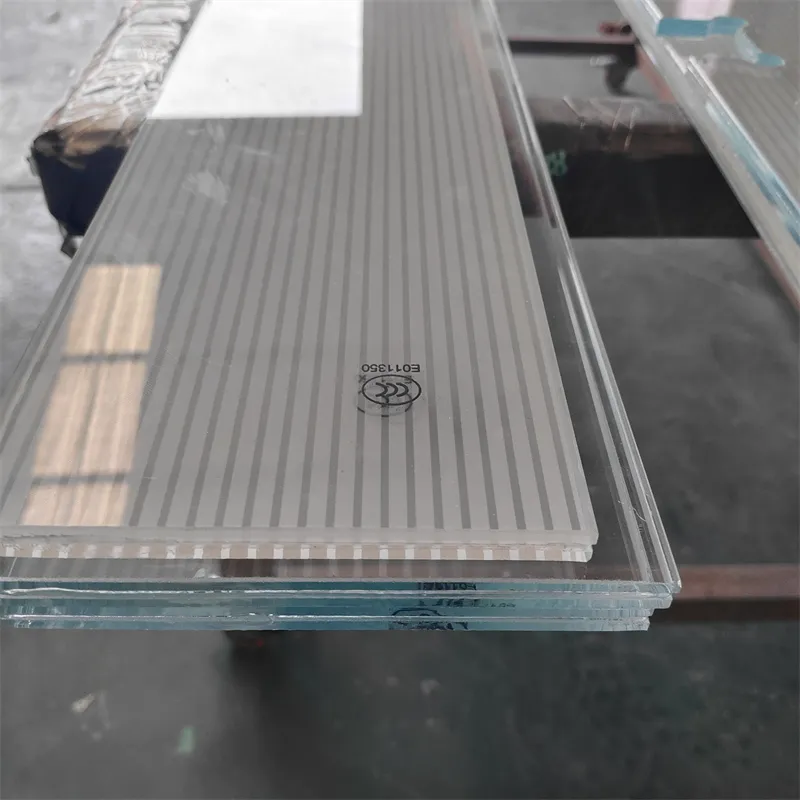Dec . 10, 2024 00:41 Back to list
Innovative Reflective Glass Solutions for Enhanced Energy Efficiency and Aesthetic Appeal
The Essence of Reflective Float Glass A Modern Architectural Marvel
In the ever-evolving landscape of architecture and design, the materials employed play a pivotal role in shaping the aesthetics and functionality of buildings. One such material that has gained prominence in recent years is reflective float glass. This innovative product seamlessly combines aesthetic appeal with practical benefits, making it a cornerstone of contemporary architecture.
Understanding Reflective Float Glass
Reflective float glass is a type of glass that combines the clarity of traditional float glass with a reflective coating that enhances its surface properties. This glass is manufactured through a process where molten glass is floated on a bed of molten tin, resulting in a smooth, uniform surface. To create the reflective quality, a thin layer of metallic oxide is applied to one side of the glass, allowing it to act as a mirror while still retaining transparency.
The reflective properties of this glass allow it to bounce back light while reducing unwanted glare and heat absorption. This dual function makes it ideal for a variety of applications, from building facades to interior design elements.
Aesthetic Appeal
One of the most striking features of reflective float glass is its aesthetic versatility. Architects and designers appreciate how it enhances the visual language of structures. The mirrored surface can create stunning visual effects, reflecting the environment, sky, and other architectural features. This reflective quality not only beautifies buildings but also fosters a sense of harmony between the structure and its surroundings.
Moreover, it allows for custom applications, including various tint options that can complement or contrast with other materials used in a project. By manipulating light and shadow, reflective float glass can create dynamic visual experiences that change throughout the day, depending on the angle of the sun.
Energy Efficiency and Sustainability
In an era where sustainability is paramount, reflective float glass contributes significantly to energy efficiency in buildings. The reflective coating reduces heat gain by minimizing solar radiation entering the building, which can lead to lower cooling costs and energy consumption. This energy efficiency is particularly valuable in large commercial buildings that require substantial climate control.
reflective float glass

Moreover, the use of reflective float glass can contribute to LEED (Leadership in Energy and Environmental Design) certification, as it helps meet the energy performance criteria set by this globally recognized rating system. By choosing reflective float glass, architects and property owners can take a step towards a more sustainable future while also reducing their carbon footprint.
Safety and Durability
Beyond aesthetics and efficiency, reflective float glass is also known for its safety and durability. Thanks to its manufacturing process, it achieves a high level of strength, making it resistant to impact and weathering. This resilience is crucial in many architectural applications, especially in urban environments where buildings face various challenges such as harsh weather conditions and potential vandalism.
Moreover, advanced coating technologies have enhanced the durability of the reflective surface, preventing corrosion and degradation over time. This lifespan advantage not only benefits building owners but also reflects the material's sustainability as it reduces the need for frequent replacements.
Practical Applications
The applications for reflective float glass are vast and varied. From commercial office buildings to residential properties, its transformative quality is evident. In skyscrapers, for instance, this glass can create a stunning facade that enhances the skyline while providing energy savings. In interior design, it can be used in partitions, wall panels, and furniture, introducing light and openness to spaces.
Reflective float glass is also a popular choice for retail environments where showcasing products without glare is essential. Institutions such as museums and galleries utilize reflective float glass to create controlled lighting environments that enhance the viewing experience of artworks.
Conclusion
Reflective float glass epitomizes the confluence of beauty, functionality, and sustainability in modern architecture. Its ability to transform spaces while providing energy efficiency and durability makes it an invaluable material for architects and designers alike. As we move towards a future that prioritizes sustainable design solutions, reflective float glass stands out as a testament to innovation in building materials. Embracing its potential not only enriches our built environment but also resonates with a growing commitment to sustainability and artistry in architecture.
-
Safety and Style with Premium Laminated Glass Solutions
NewsJun.24,2025
-
Reinvents Security with Premium Wired Glass
NewsJun.24,2025
-
Premium Float Glass Line for Modern Architecture
NewsJun.24,2025
-
Low Emissivity Glass for Energy-Efficient Architecture
NewsJun.24,2025
-
High-Performance Insulated Glass Solutions for Modern Architecture
NewsJun.24,2025
-
Elevates Interior Style with Premium Silver Mirror
NewsJun.24,2025
Related PRODUCTS














